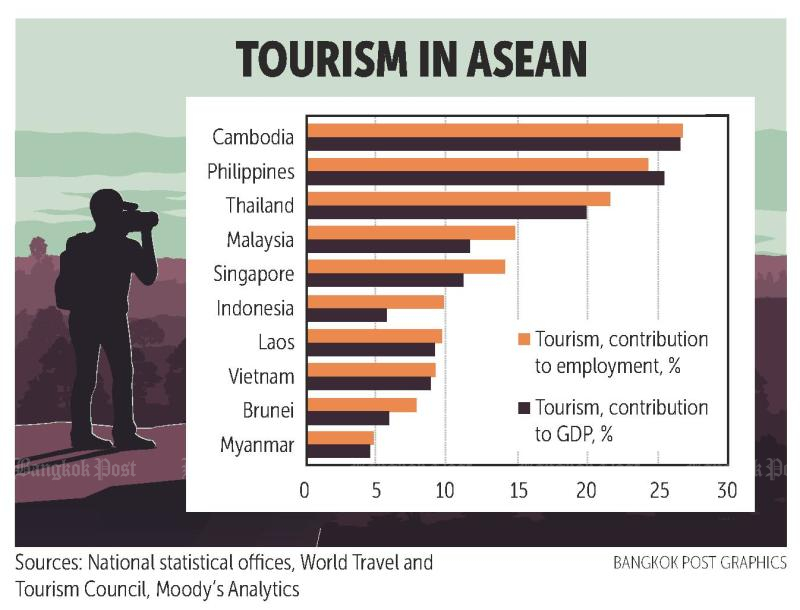Thailand: Reopening to local tourism
As many countries are still struggling with the Covid-19 pandemic and international travel restrictions to curb the spread, Thailand is restarting its crucial tourism sector to help counter a recession, starting with domestic tourists.
According to the World Travel & Tourism Council report, the tourism sector accounted for 19.7% of Thailand’s GDP in 2019. From that, 5.2% of GDP is generated from domestic tourism. The sector is also an important source of employment, contributing 21.4% of total employment in 2019.
However, the coronavirus outbreak in the first half of the year and subsequent preventive measures, including banning incoming commercial passenger flights temporarily, caused a plunge in air traffic. Aircraft movements and passenger traffic through the country’s airports between January and May decreased by 55% and 66%, respectively.
Airports of Thailand Plc expects it will be October 2022 before flight and passenger numbers recover to the levels seen in 2019.
The country has entered the fifth phase of its reopening since the lockdown was imposed in March. Despite no confirmed local transmissions of Covid-19 since May 25, authorities continue to ban inbound flights for general tourists, as there are second-wave spikes in many countries.
As part of the economic recovery effort, the cabinet has approved three tourism campaigns aimed to kick-start the recovery of the domestic sector from July to October.
The Tourism Authority of Thailand earlier projected 12 million outbound travellers in 2020 before the coronavirus outbreak and is planning to convert 6 million of them into domestic tourists.
Funding for the packages will come from the 400-billion-baht economic recovery spending plan approved in April, and is worth 22.4 billion baht to boost domestic tourism by subsidising hotels and air tickets for 4 million residents, as well as free trips for 1.2 million medical personnel.
The cabinet also approved additional public holidays to create two four-day weekends in July.
During the first long weekend from July 4-7, Apple’s mobility trends report showed a 28% spike in requests for driving directions in Thailand on the Apple Maps app over the previous weekend. The data is compared to a baseline volume of requests set on Jan 13.
The requests during the long weekend were the highest since the pandemic began, suggesting some form of economic recovery as movement restrictions were eased.
The total contribution of travel and tourism to Thailand’s GDP and employment has been rising steadily since 2012. However, the Covid-19 outbreak has affected economic activities more severely in all aspects.
Although Thailand has been cited as a success story in containing the coronavirus outbreak, tough times lie ahead for the tourism sector. The impact depends on the restrictiveness of the measures implemented and how long the pandemic will last.
Tourism will not be the same after Covid-19. Travellers will need to adopt “new normal” practices and maintain social distancing and safety precautions such as wearing masks and regular hand washing wherever they go.
For the next phase of lockdown easing, it may be necessary to issue measures to cap the number of visitors to tourist spots, similar to limiting the number of people going to shopping malls.
Statistics from the Tourism and Sports Ministry revealed foreign tourist arrivals hit a record 39.8 million in 2019. However, a gloomy outlook for the tourism industry means the government will have to widen stimulus for domestic tourism.
If 75% of the 400 billion baht spent by Thais travelling abroad last year can be redirected to local tourism, and domestic tourism revenue estimated at 600 billion baht for 2020 takes hold, income from domestic travel will reach 900 billion — close to the figure of 1.28 trillion baht generated from tourism in primary cities last year.
Source: https://www.bangkokpost.com/business/1956091/reopening-to-local-tourism


 English
English




